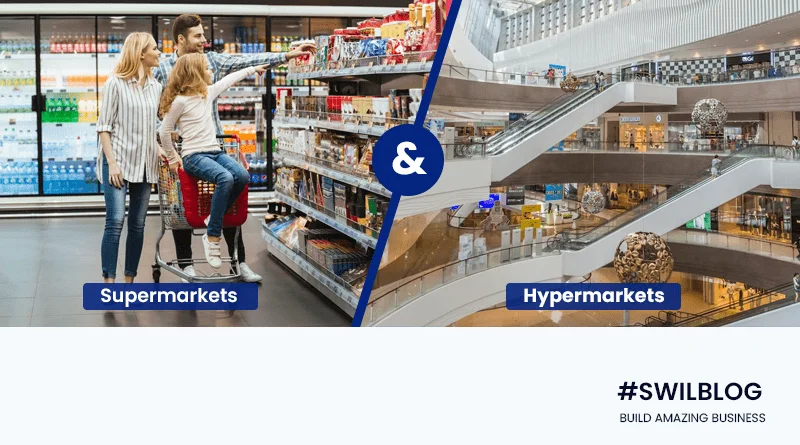Introduction
There are management, information, and systems. At the core of such systems are those that provide important information to company management. The hurdles of running a business have increased our reliance on advanced technology that eliminates any room for error. MIS reports are the reports that management needs to assess the performance of the organization. These reports enable faster decision-making. A management information system, often simply called an MIS, can be understood by looking at the individual words that make up its name.
Article Content-
- Full Form of MIS Report
- Meaning of MIS Report
- How does an MIS work?
- Components of an MIS
- Why are MIS Reports important for business?
- Various types of MIS Reports
- Benefits of MIS Reports
- How to prepare an MIS report
- What is MIS report in Excel?
- Types of MIS reports in Excel
- Wrapping Up
Full Form of MIS Report
MIS Report stands for Management Information System report. Employees of all departments refer to this report as MIS Reports. This report is produced after collecting data from all departments. It is then compared and analyzed and put in the form of a report. These reports are based on daily business operations and common business processes.
Meaning of MIS Report
MIS reports are reports created for enterprise management. It consists of reports that are created by automatically collected data from various systems. An MIS is an organized system for collecting, storing, and disseminating data in the form of specific information. This information is required to perform administrative functions. It is one of the important tools that support the decision-making process of companies. This includes the collaboration of people, data, business processes, software and hardware. If a company has an MIS system, it can automate all related processes such as data collection and organization. It can also be used for documentation and reporting.
Large companies need daily reports for some activities, such as sales and inventory. Before computers and the internet, teams spent hours creating such daily reports. They used phones, books and calculators. Today, a company can integrate all data from different departments in multiple locations into the MIS system. For example, at the end of the day, if a sales manager needs specific sales data from a particular store, MIS can be used to generate those reports.
How does an MIS work?
Raw data is important for MIS reporting. The MIS system database is organized to relate to all major aspects of a company’s operations. MIS can integrate data from both internal and external sources. Such systems store data for long periods of time. MIS uses pre-configured templates and formulas to manipulate data. It then creates specific reports on demand. MIS produces results not only as reports, but also as responses to queries, decision outcomes, transactional documents, and feedback systems.
Data is essential to accurate reporting. Departments and sources responsible for generating data should ensure that it is timely and error-free. The data must also meet certain standards of quality and accuracy. Users enter data and the MIS system processes the information and generates reports that meet their specific needs.
Components of an MIS
- Users: The people who use the MIS to record daily business transactions.
- Data: The data related to transactions, sales, deposits, withdrawals, exchanges, and returns is performed on a daily basis.
- Hardware: This refers to the various technological devices, machines, equipment, printers, computers, etc., that are used to process information on a daily basis.
- Software: Programs used to operate systems and execute daily tasks efficiently.
- Business Processes: Daily business procedures, processes and standard operations procedures (SOP) set by the management of the company.
Why are MIS Reports important for business?
A company’s MIS report is prepared after a proper analysis of current data and recent trends prevalent in the market. The primary purpose of the MIS reporting system is to provide the company with critical business information. MIS reports are used for complex business decision making.
Reliable insights about current market trends are essential for managers. They can make quick and well-founded decisions. MIS reports playing a key role in improving organizational performance, productivity, and profitability. In this way, the MIS reporting system acts as the backbone of your business. It helps your organization stay ahead of the competition.
Various types of MIS Reports
| 1. Sales MIS Reports | Sales MIS reports are created and maintained by sales and marketing departments. They are done for transactional analysis of various products and services. The analysis is based on variance. Variance is the difference between predicted sales and actual sales. |
| 2. Account Reports | These reports for accounts provide details of assets, liabilities, expenses & income. Developed for many purposes by the manufacturing, marketing, and sales departments. They include cash flow statements, production reports with targets, and sales variance reports. |
| 3. Budget Report | Creating a budget report is necessary for all businesses. They need to manage allotted finances and cut expenses. Common budget reports include production budgets, expenditure budgets, income budgets, and cash budgets. |
| 4. Cash Flow Statement Report | This MIS report allows the business to analyze cash inflows and outflows. They confirm transactions for a given period. It also helps track the source of funds used for outflows. |
| 5. Funding Statement Report | The Funding Statement Report is processed by the Accounting and Finance team. It tracks funding sources. It is also created to see where the funds were spent. |
| 6. Profit Reports | Profit reports are produced by accounting to identify the difference between the actual profit and the estimated profit for a given period. It also takes into account the factors that contributed to winning or losing. |
| 7. Income Statement Reports | Income, tax, ledger, & balance sheet reports are critical for assessing finances of shareholders and investors. The accountant can analyze the ongoing financial situation of the company. |
| 8. Abnormal Loss Report | Abnormal loss report under the manufacturing department helps companies save money. Accidental losses include manufacturing defects, machinery spills or failures, raw material breakage, or natural disasters. |
| 9. Expense Reporting Report | Expense Reporting Expense reporting is one of the most important aspects of MIS. Whether you are a small business or a large company, analyze your total costs for different departments. You can determine if you can cut them. |
| 10.HR MIS Report | Helps you analyze employee performance over time. Calculate the total number of tasks, tasks, or projects completed by different employees during that time period. |
| 11. Inventory Report | MIS provides an inventory report where raw materials are surplus and need replenishment. It also helps you keep daily, weekly, monthly and quarterly production and inventory accounts. |
| 12. Statistical Publications | Decision-making and planning require statistical publications and information. This type of MIS system report is important for analyzing data and producing accurate reports. |
| 13. Order Backlog Report | This type of his MIS report is produced by marketing and sales staff. Backlog reporting is essential to maintain the relationship between product capacity and orders. |
| 14. Ideal Time Report | This type of his MIS report highlights the time each worker spends on various tasks and idle time due to lack of required resources or materials. The idle time report is generated at the production level of the production unit using time reservation records. |
| 15. Machine Use Report | This MIS system report lists the number of hours the machine has been used and the amount of time it has been idle. They are often made in production areas by responsible supervisors. |
| 16. Summary Reports | Summary reports summarize all information and present the data in a way that gives you a clear picture of your financial situation. Some good examples are reports on the value of all new purchases made and detailed insights into sales. |
| 17. Trend reports | Trend reports help you compare past performance to current performance. Such reports show the performance of business units or product categories. These types of MIS reports are important for comparing actual performance with estimates. |
| 18. Exception Report | The exception report shows exactly where the problem occurred and why the performance was incorrect. A good example is evaluating why spending in a particular year is higher than the budget set. |
Benefits of MIS Reports
As tedious as it may seem, MIS reporting is an area that requires a lot of experience and knowledge. There are many reasons why an MIS report is an integral part of every company:-
| 1. Better data management | This report consists of all kinds of manufacturing data. These include type of goods, manufacturing date, batch, location, date and time. |
| 2. Trend analysis | This report consists of all details on production data. These include goods, production date, production batch, production location, production date and time. Different companies have different formats depending on what the report is for. |
| 3. Strategic business planning | MIS reports are available to perform analytical data for logistics data. These include inventory, transportation, storage and packaging, production planning and demand forecasting. |
| 4. Setting goals | Can include key elements such as deals closed, deals in pipeline, status of deals, dates closed, and sales cycle duration. |
| 5. Problem detection | Like the reports above, you can report on various factors related to storage and construction. Of course, the format will vary from company to company, but the key elements may be the same. |
| 6. Increase efficiency | The relevant information provided by the MIS and reports is used in developing company goals and strategies. Company performance can also be evaluated using MIS reports. MIS thus plays an important role in increasing the efficiency of the company. |
| 7. Comparison of business development | The company’s relevant business data and information are stored and maintained in the MIS database. Databases in a MIS system can be accessed at any time. You can measure your company’s growth by comparing your company’s current performance to the previous years. |
How to prepare an MIS report
MIS reports are critical to business decisions. It should be prepared with great care. Therefore, an inaccurate MIS report can have a serious impact on your business, so you need to ensure the accuracy of your filing. The company can either hire staff to create her MIS report or outsource the process.
Hiring MIS and reporting staff is very costly for businesses. Also, the accuracy of the report is not guaranteed. Rather than hiring a person for the MIS, companies prefer outsourcing the process. This is so that the company receives professional services at less cost. Additionally, outsourcing the MIS reporting process is cost effective. It also saves valuable admin time.
What is MIS report in Excel?
MIS reports in Excel are a real-time business approach. It is used by companies to generate and track business data through interactive dashboards. MIS runs in many BI tools, but Excel falls short compared to others. Having the best knowledge of creating Excel MIS reports is a great advantage for aspiring business analysts.
An Excel MIS report is an information management system use case. It uses Excel as a data storage and management system. Data or business analysts or managers coordinate and produce interactive reports. These reports are sent to higher authorities or decision-makers bodies to take action. They use it to address any problems that arise and to make improvements.
Types of MIS reports in Excel
| 1. Manufacturing Report | This report consists of all kinds of manufacturing data. These include type of goods, manufacturing date, batch, location, date and time. |
| 2. Production Report | This report consists of all details on production data. These include goods, production date, production batch, production location, production date and time. Different companies have different formats depending on what the report is for. |
| 3. Logistics Reports | MIS reports are available to perform analytical data for logistics data. These include inventory, transportation, storage and packaging, production planning and demand forecasting. |
| 4. Sales Reports | Can include key elements such as deals closed, deals in pipeline, status of deals, dates closed, and sales cycle duration. |
| 5. Storage and Construction | Like the reports above, you can report on various factors related to storage and construction. Of course, the format will vary from company to company, but the key elements may be the same. |
Wrapping Up
The format of reporting in your company depends on the type of department you work in. It also depends on the number of resources you use to keep your department running. A good MIS system helps produce valuable reports that keep your business competitive. It also ensures that you get better insights for making informed business decisions in the long run. Let SWIL help generate excellent MIS reports with the help of its robust technology software. Check out SWIL today!








